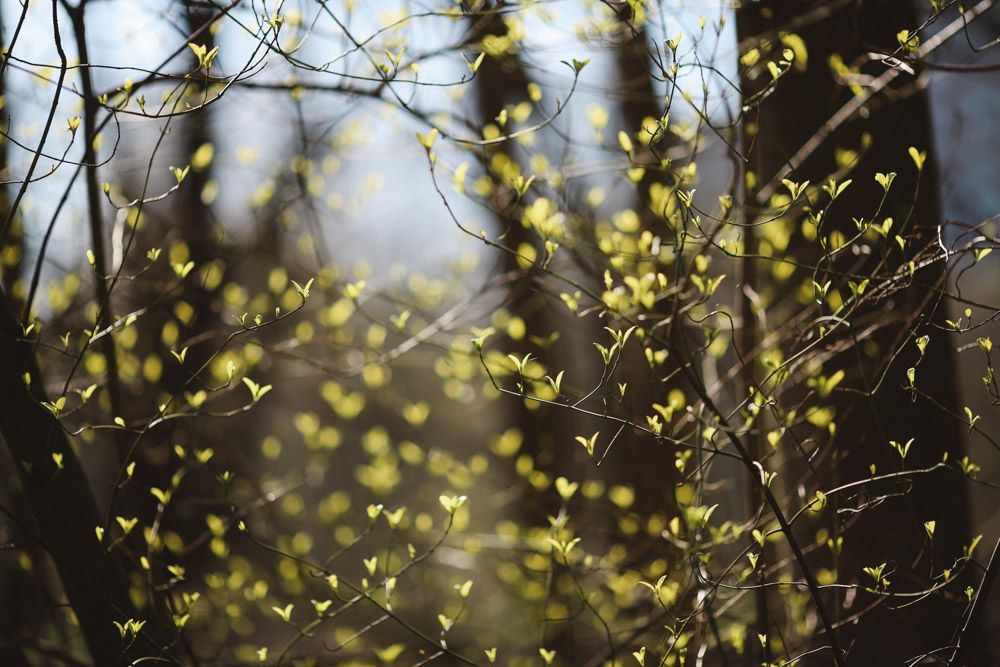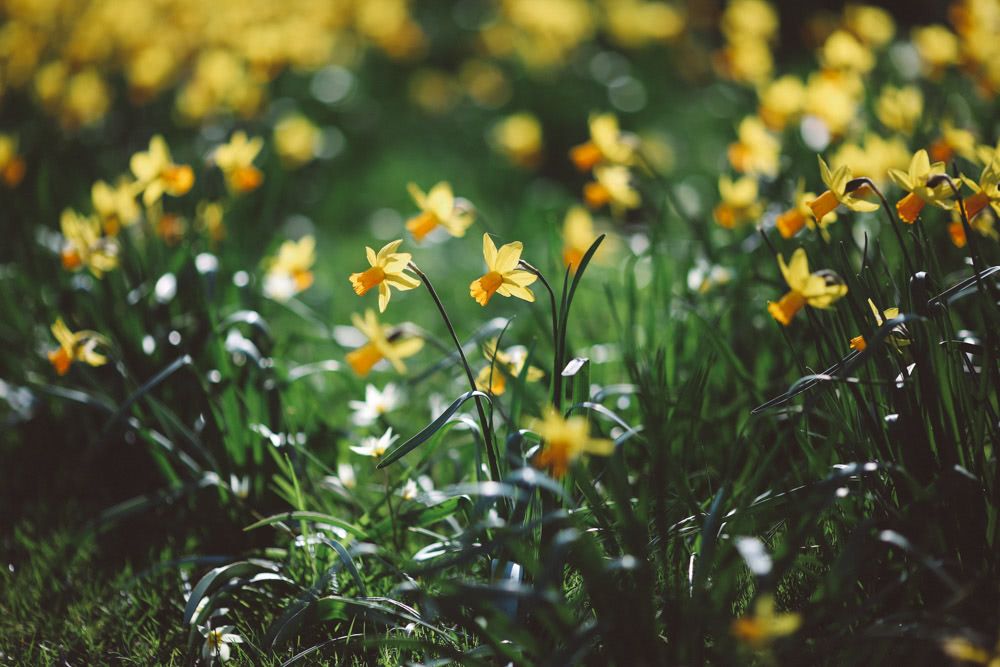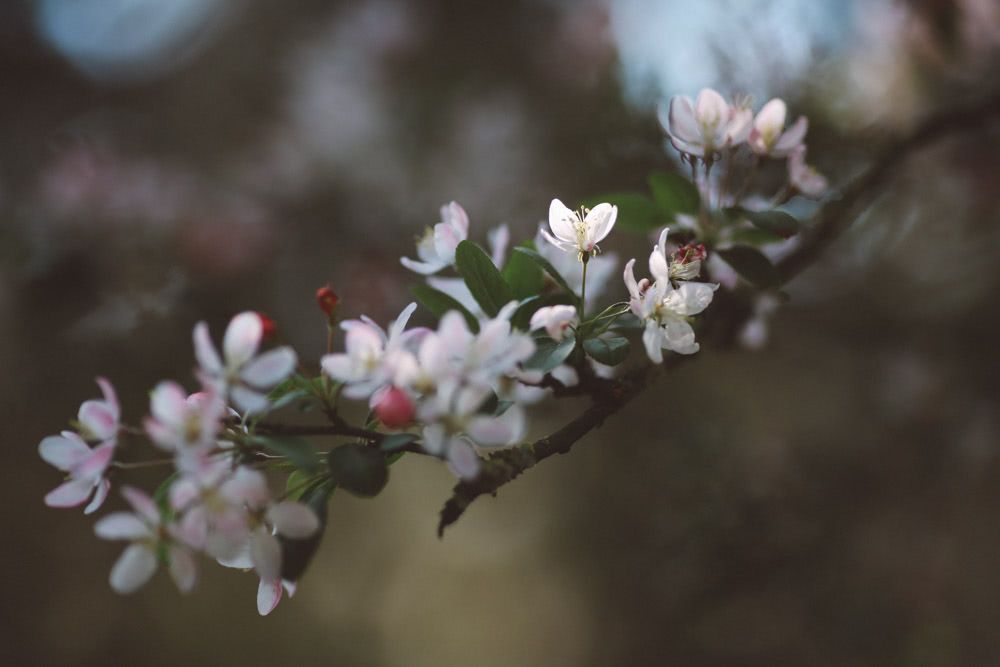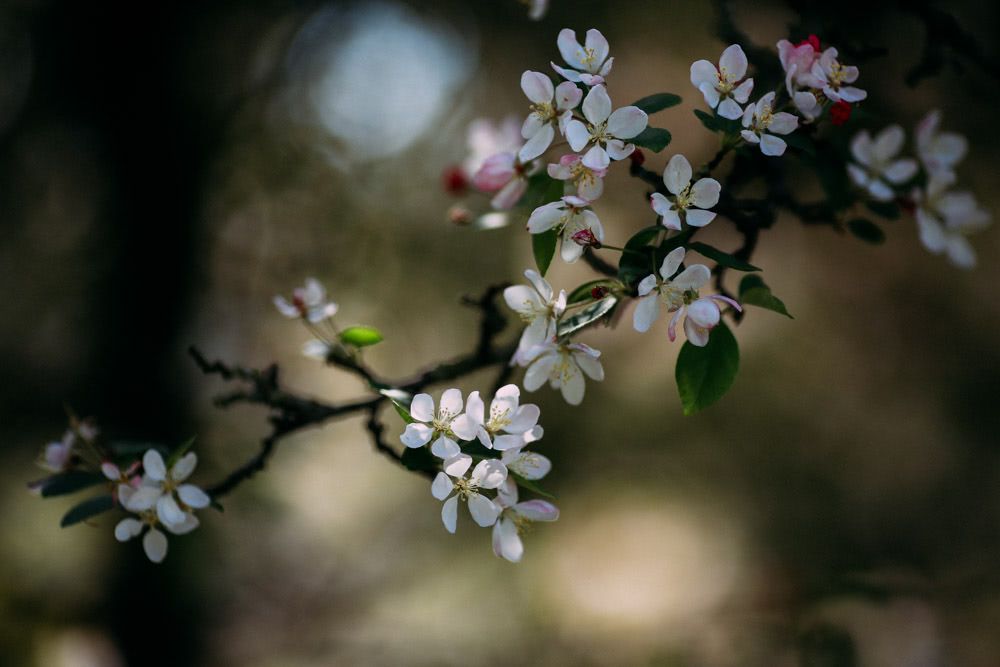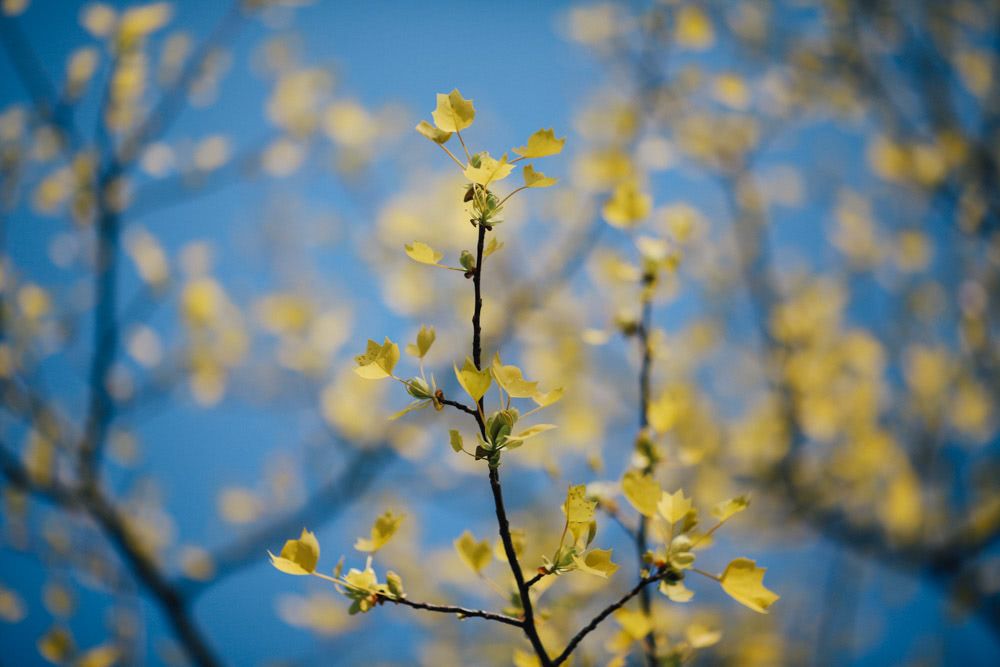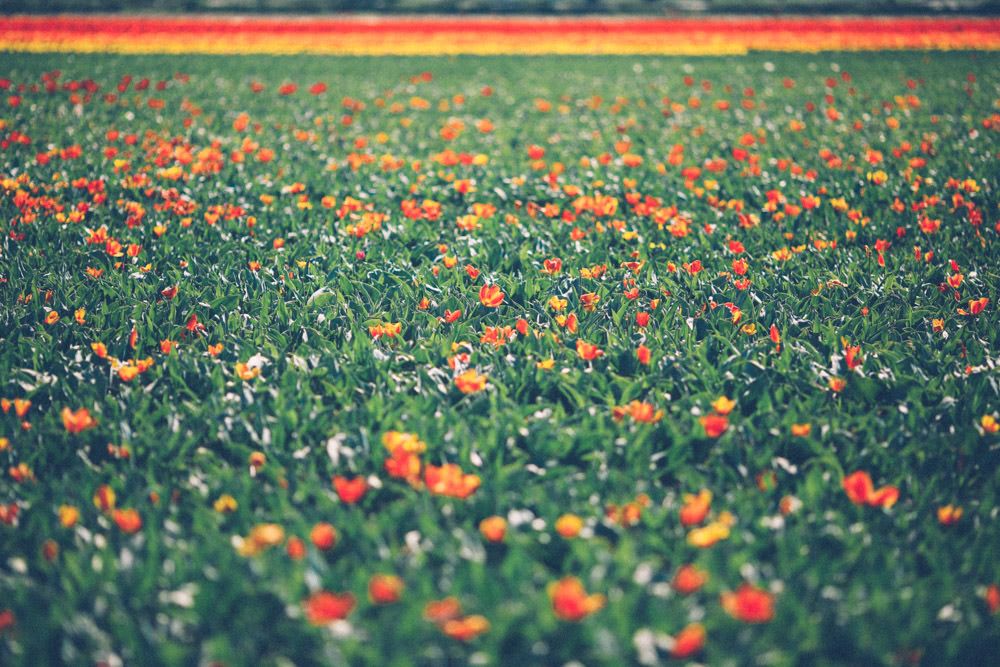Postcards from New York City
On a visit to New York City a few weeks ago, we took a boat tour in the Hudson river with our friends. The tour offered wonderful views of the city’s skyline. To help us all make sense of the unfolding vistas, the boat included a tour guide. His commentary placed extra emphasis on America’s acts of maritime valour and the various naval vessels currently docked at the port. We were also regaled with anecdotes from the emergency plane landing of 2009. Perhaps because we were visiting during the Memorial Day weekend, everything seemed to be tinged with a patriotic fervor.
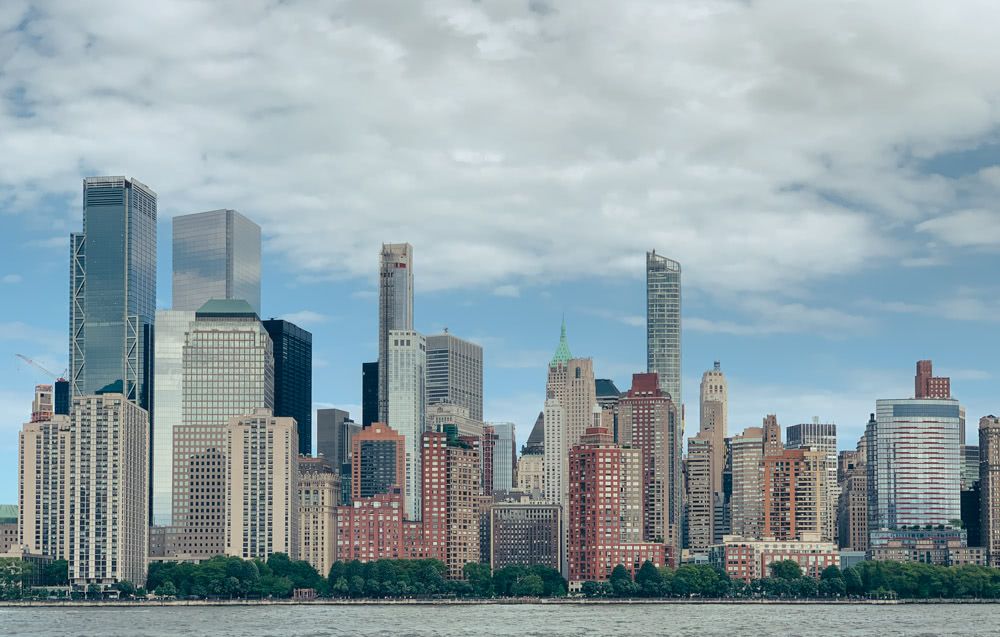 New York City Skyline
New York City Skyline
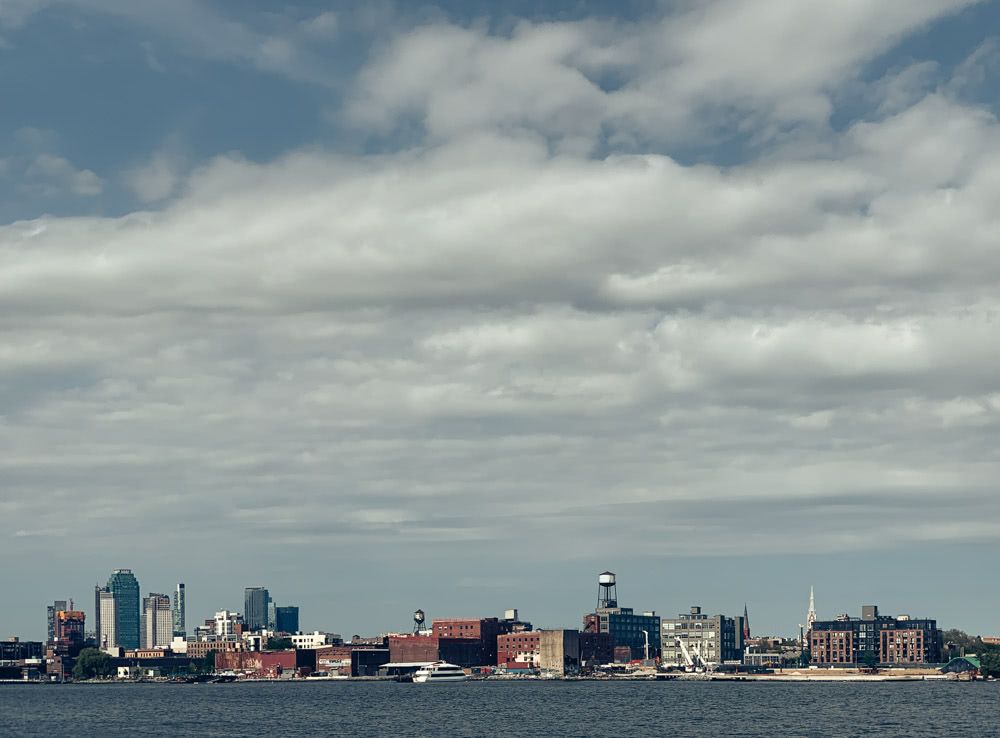 New York City Skyline
New York City Skyline
The tour eventually takes you to the Statue of Liberty where the boat lingers in the waters for a few minutes to allow everyone to take selfies with the iconic landmark. From there it turns back.
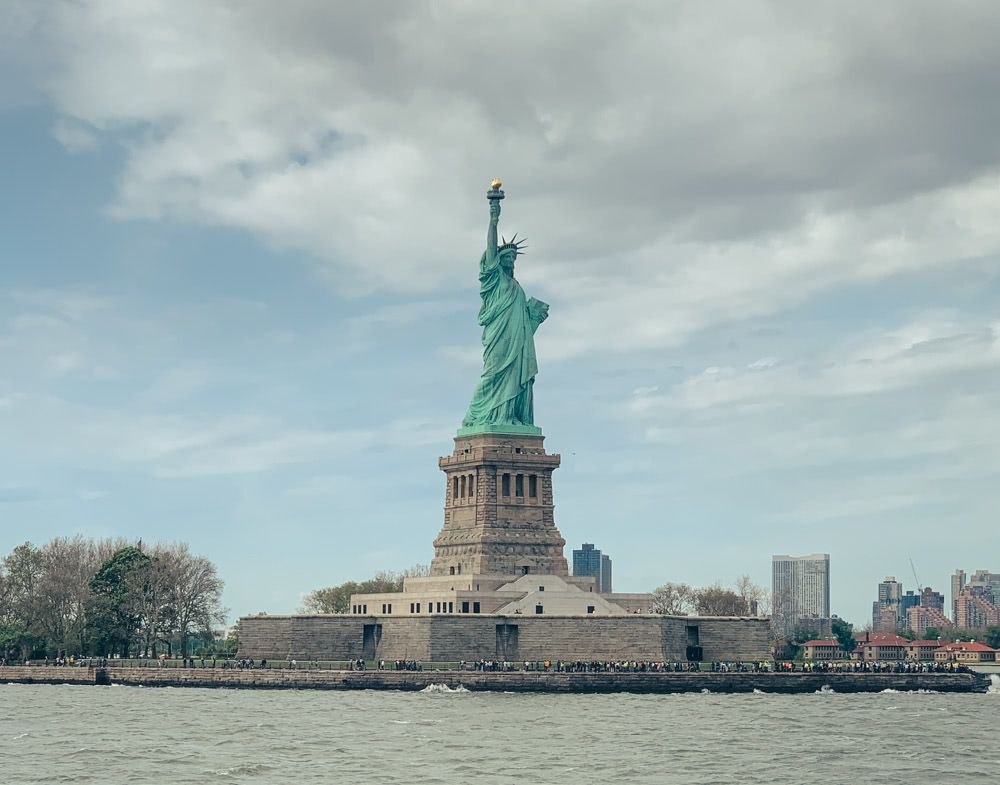 The Statue of Liberty
The Statue of Liberty
Spring Snow
Come May and the elm trees in Amsterdam disperse clumps of their seeds into the air. A thin, pale-white veneer of these seeds settles down on the streets and in the canals. The phenomena is fondly known here as “spring snow”.
It’s been an unseasonably cold May in Western Europe. When we were in Munich early last month, the weather forecast said that it would snow in the Bavarian alps; a mere hour’s train ride from Munich. Naturally, We took the train next morning and were treated to an unusual landscape. All signs pointed to it being spring - the green trees, the cherry blossoms, and yet everything was covered in several inches of snow.
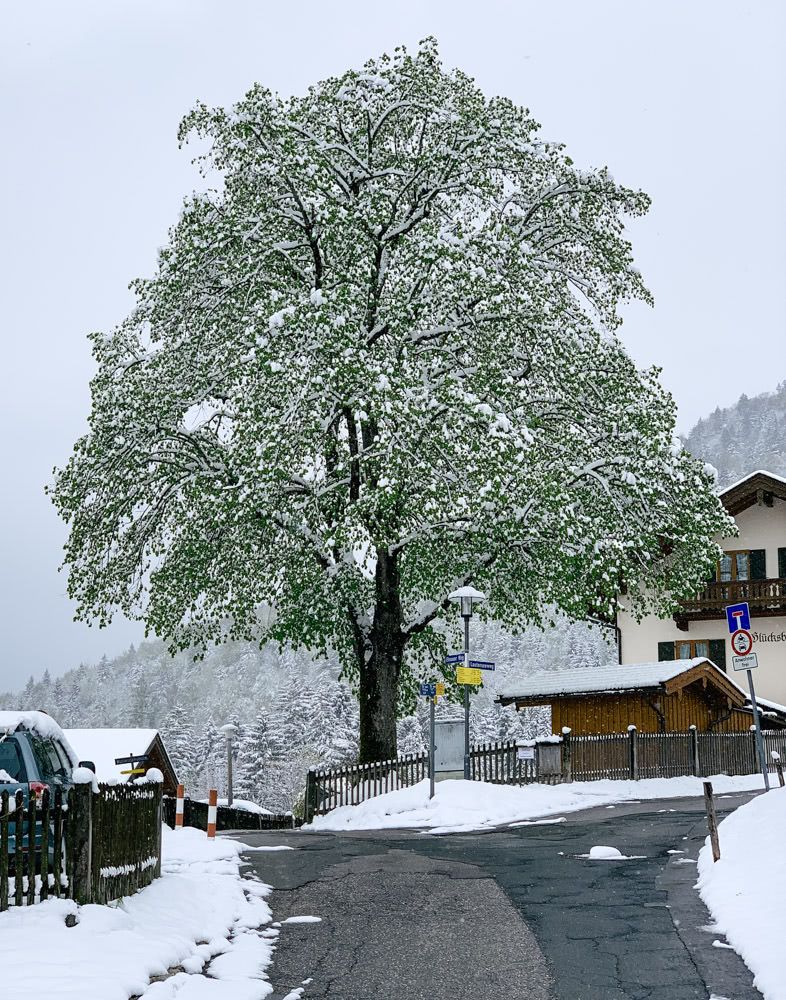

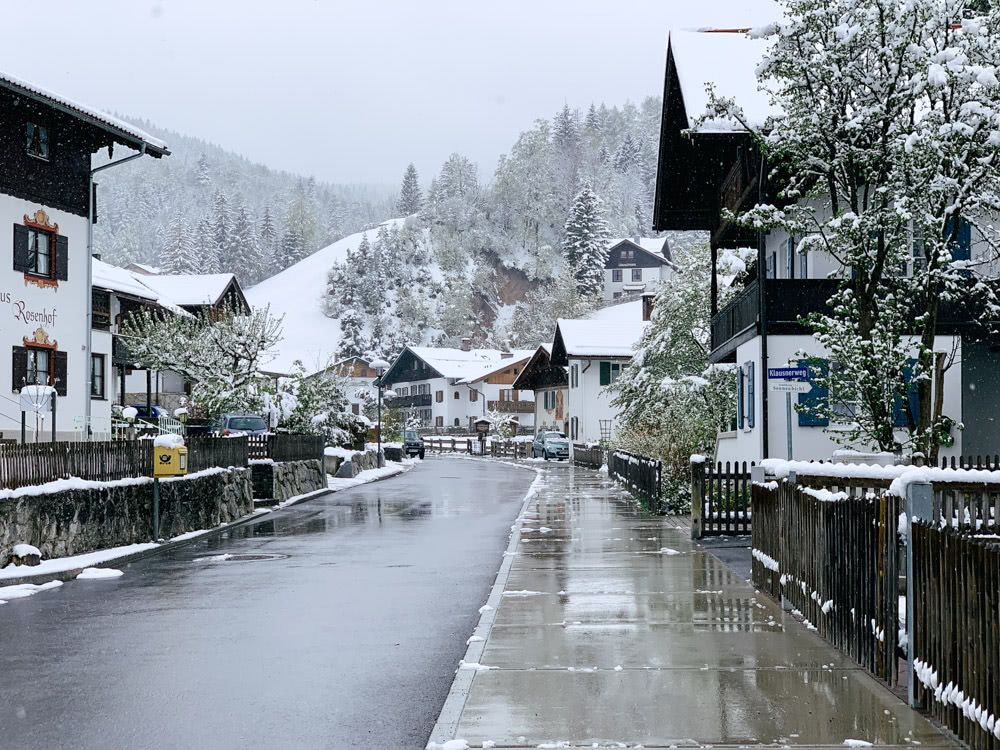
A short trek into the mountains and the snow at least didn’t look completely out of place.
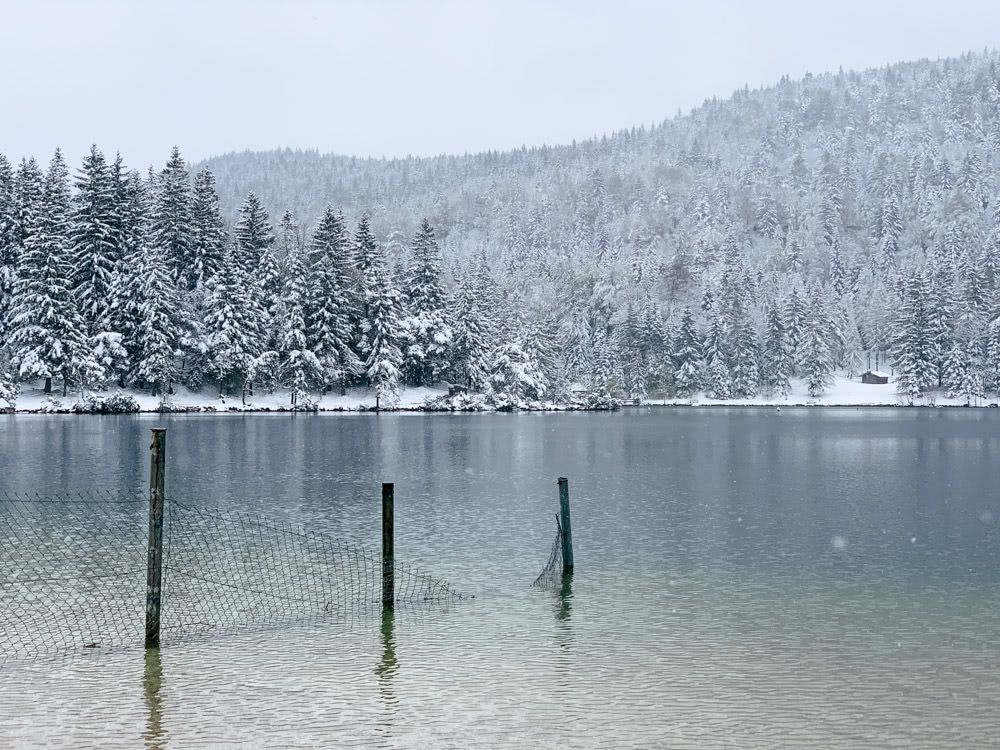
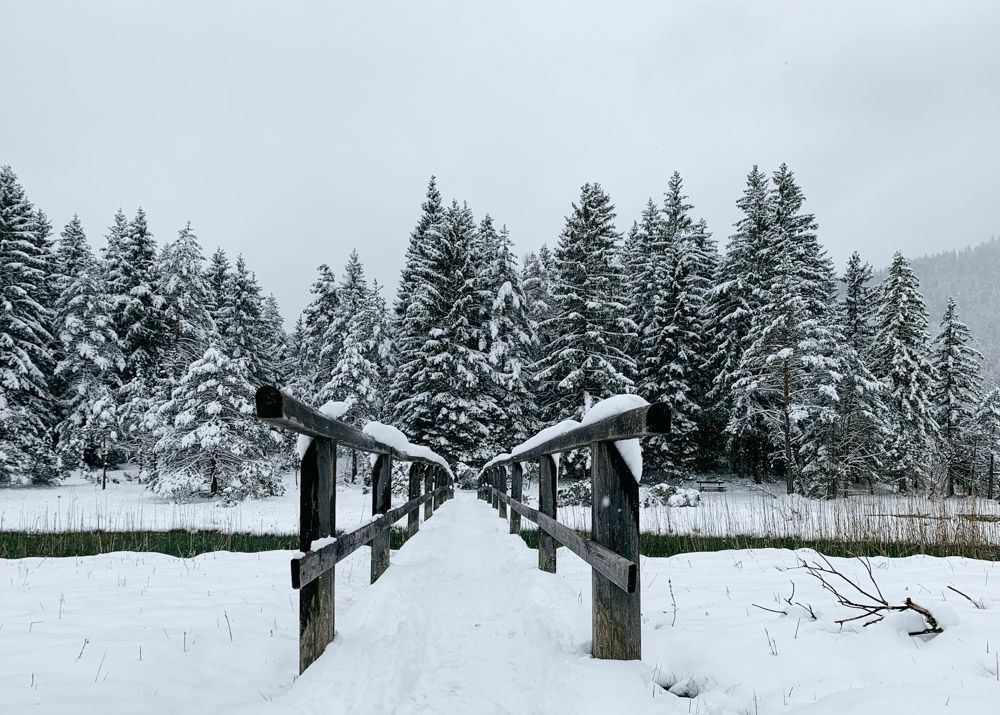
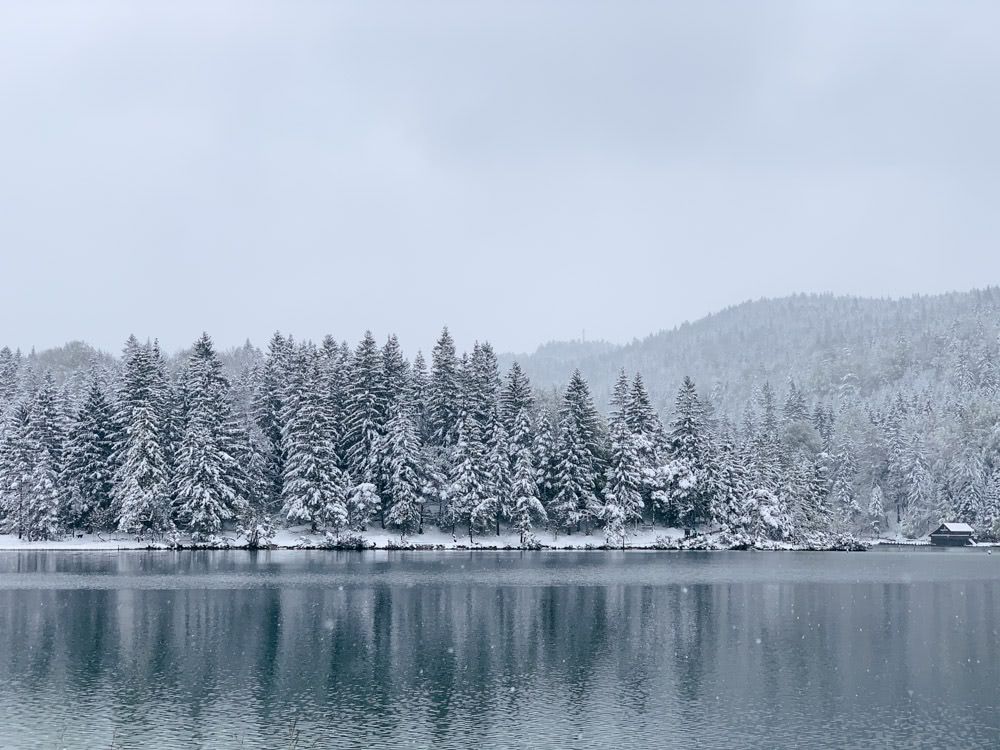
We sat in a cafe by the lake and enjoyed a leisurely lunch while real spring snow fell from the sky.
A visit to the Royal Botanical Garden of Madrid
We were in Madrid last week. It’s a 2½ hour flight from Amsterdam. The wife and I mused that it’s the same duration as the Delhi-Bangalore flight that we used to take many times in India1. And it’s the same north-south direction as well, just that here it gets you to another country.
The evening we landed in Madrid, was warm and sunny. This lulled us into stepping out of our hotel next morning in less than requisite layers of clothing. In our minds, any place 2½ hour flight south of Amsterdam has to be warm and sunny - especially when it’s almost April. Madrid was a nippy 12ºC that morning.
Since our hotel2 was a mere 10 minutes walking distance from the Royal Botanical Garden of Madrid, that’s where we started our morning. This being spring, may trees and plants in the botanical gardens were in full bloom. I spent a good deal of time under the trees mesmerised by newly sprouted green leaves.
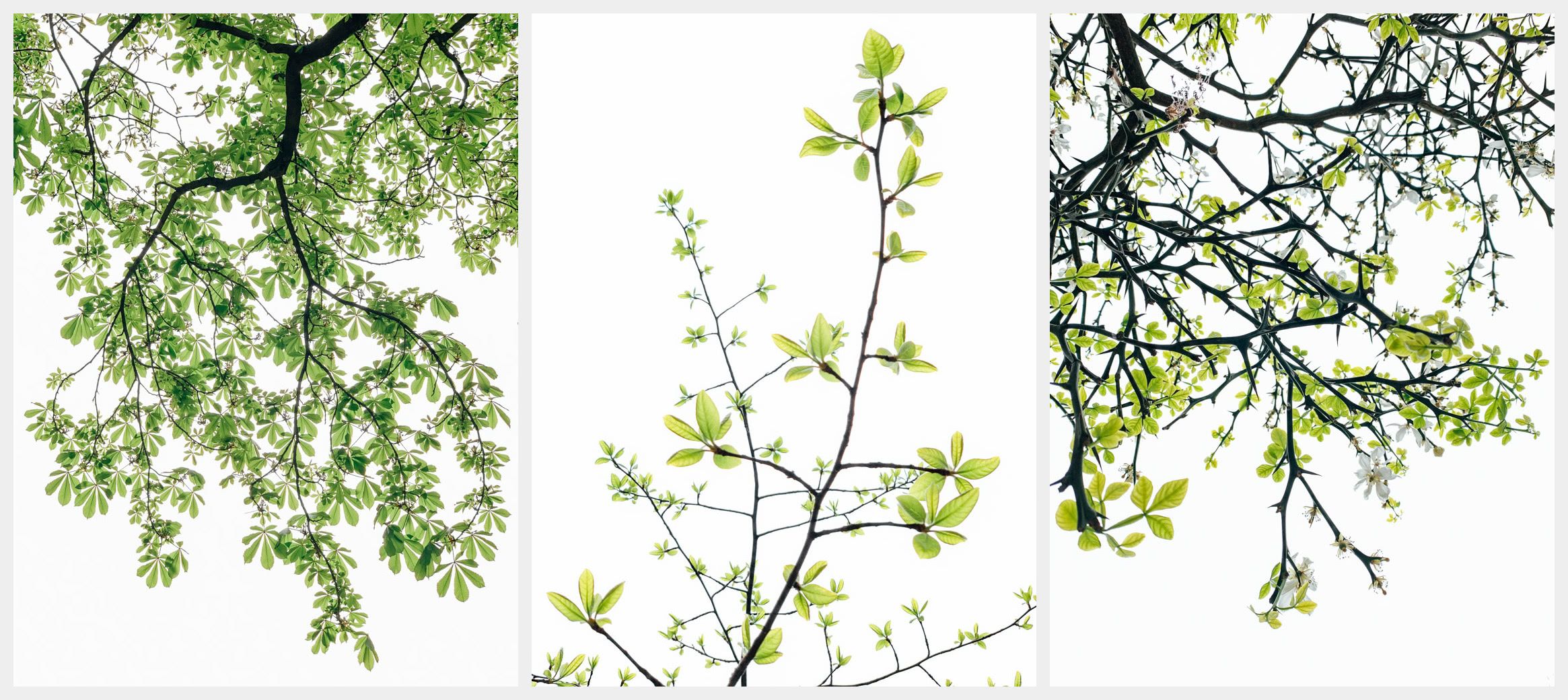 Fresh Leaves
Fresh Leaves
A few minutes later it started to drizzle. We didn’t want to pile being wet on top of being under-dressed for the nippy morning, so we promptly took refuge in the botanical garden’s exhibition area3. An exposition of works by the British artist Mat Collishaw was on. Since our entry ticket prices included access to the exposition, we decided to take a look. While I wasn’t quite enthused by some of the photographic works at the exhibition, it was hard not to be impressed by the sheer size and complexity of the 3-D zoetropes4 on display:
After 8 years in Amsterdam, those flights feel like someone else’s life.↩︎
I’ll highly recommend Only YOU Atocha, despite it’s ridiculous name (all caps YOU and all). Not only is it literally across the train station that is serviced by an Airport shuttle every 15 minutes, their breakfast spread left us feeling utterly spoiled.↩︎
Reached there quite by accident as I was actually navigating for the botanical garden’s glass house.↩︎
In Dutch, the letters o and e together are pronounced as “oo” (like in zoo). I read zoetrope first as zootrope rather than as “zo-e-trope” (the correct pronunciation). One of those moments where my newly-learned Dutch short circuits a lifetime of English.↩︎
A day in Pisa
After a couple of leisurely days in Florence, we1 started looking for nearby places we could visit. Pisa stood out - not only for a chance to see the famous Leaning Tower of Pisa, but also for the direct, 49 minute train ride to Pisa central station at an affordable 17.20 € for the both of us.
We reached Pisa around noon. We had plenty of time to visit the famous tower so we took a route that would allow us to see as much of the city as possible2. This being Italy, we first stopped at a local café for an espresso and some cookies.
Our route took us past narrow streets and small local churches whose outside walls were often adorned with brilliant murals of Mary and baby Jesus.
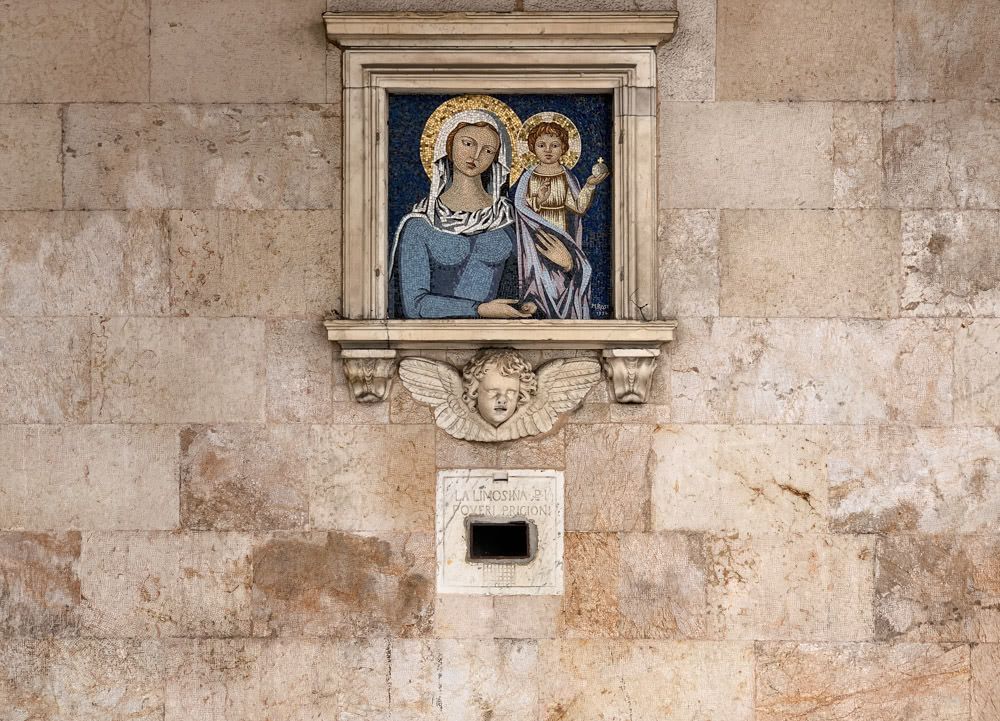 A mural of Mary and Baby Jesus
A mural of Mary and Baby Jesus
The river Arno bisects Pisa into southern and northern halves. It is roughly half-way between the train station and the Leaning Tower. Moderately busy roads and rows of squat buildings line both sides of the river. The sun-beaten facades of the buildings were painted in shades of ochre, mustard, vermilion, orange and maroon that resplendently reflected in the still water of the river.
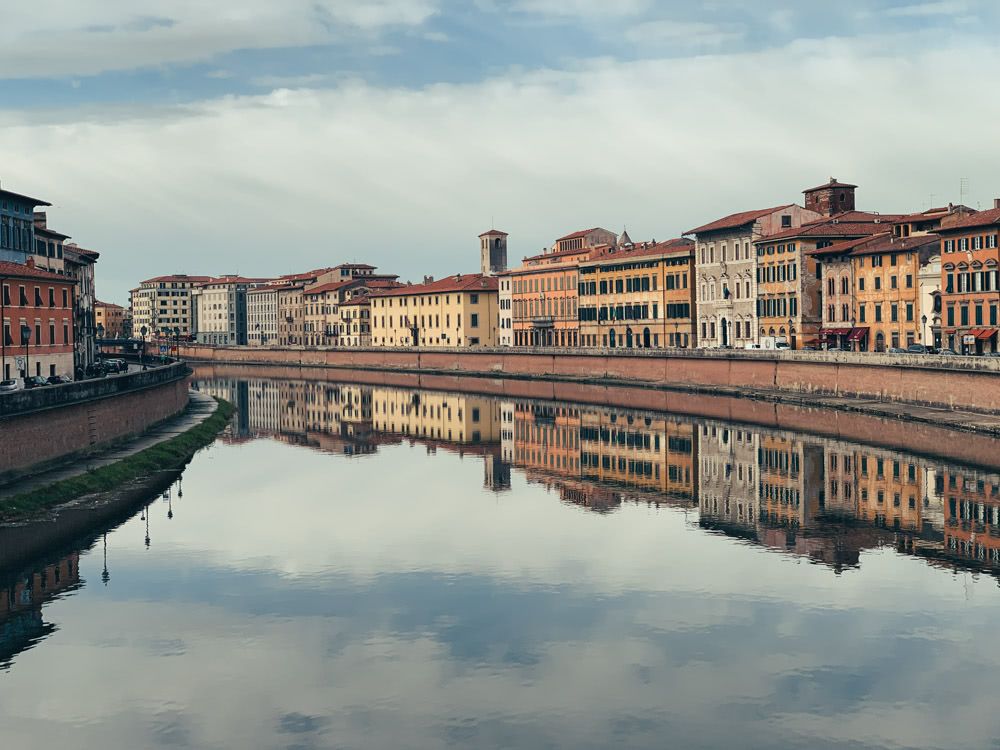 Reflections
Reflections
We approached the Leaning Tower of Pisa through an unpretentious, residential street. There were cars parked along the approach to the tower’s entrance and for some reason they seemed to be banking in a direction opposite to the tilt of the tower; as if trying to compensate for its tilt.
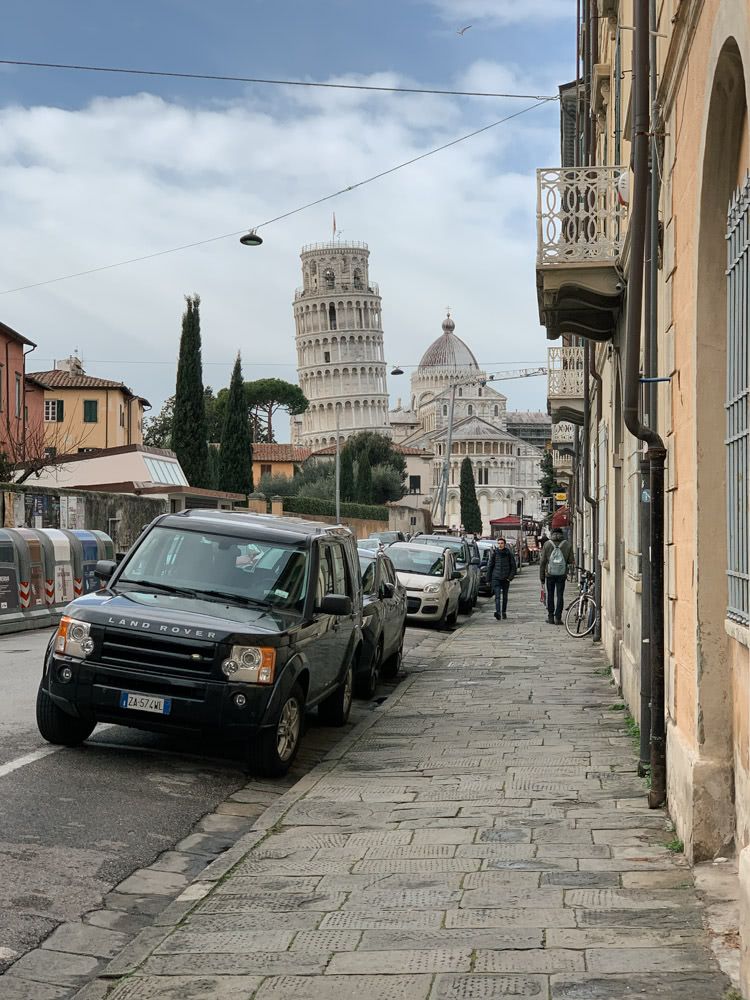 The Leaning Tower of Pisa
The Leaning Tower of Pisa
Tourists were posing for pictures that’d make them look like they were trying to correct the inclination of the tower. The tower has a kind of delicate beauty to it. It isn’t its grandeur that draws millions of visitors to it each year3, but its tilt. The attempts to correct the tilt have been going on for years. Once they straightened it up a little and checked against its further deterioration, they might’ve deliberately stopped short of restoring it to its erstwhile erectness. The Leaning Tower of Pisa sans the Leaning, just wouldn’t draw as many tourists.
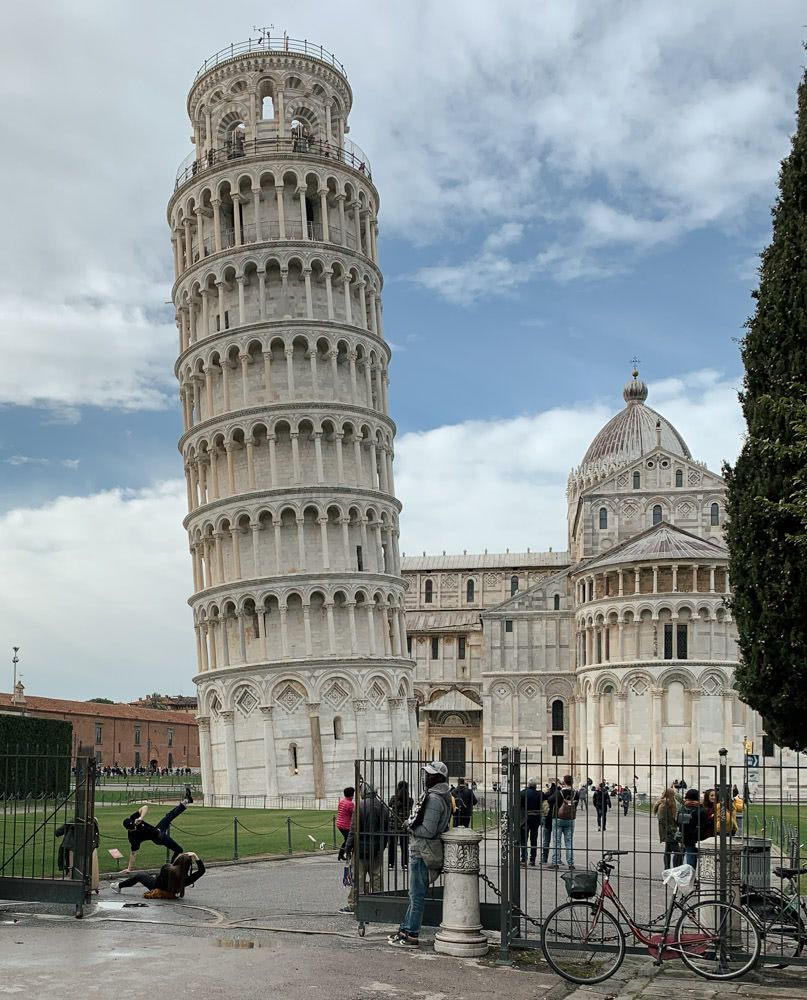 The Leaning Tower of Pisa
The Leaning Tower of Pisa
The Leaning Tower of Pisa is part of a larger complex of historical buildings that includes a cathedral, a baptistry and monumental cemetery. The entry to the complex is free but if you want to climb the tower, you need to buy a ticket. A separate 8 € “4-in-one” ticket will grant you entry into the cathedral, baptistry, the monumental cemetery and a museum (Sinopie Museum) next to the complex.
When we entered the monumental cemetery (Campo Santo), the sun was beginning to shine weakly from behind the clouds. The traceries of the Gothic windows that lined the cemetery’s large inner hall, cast soft shadows on the wall opposite.
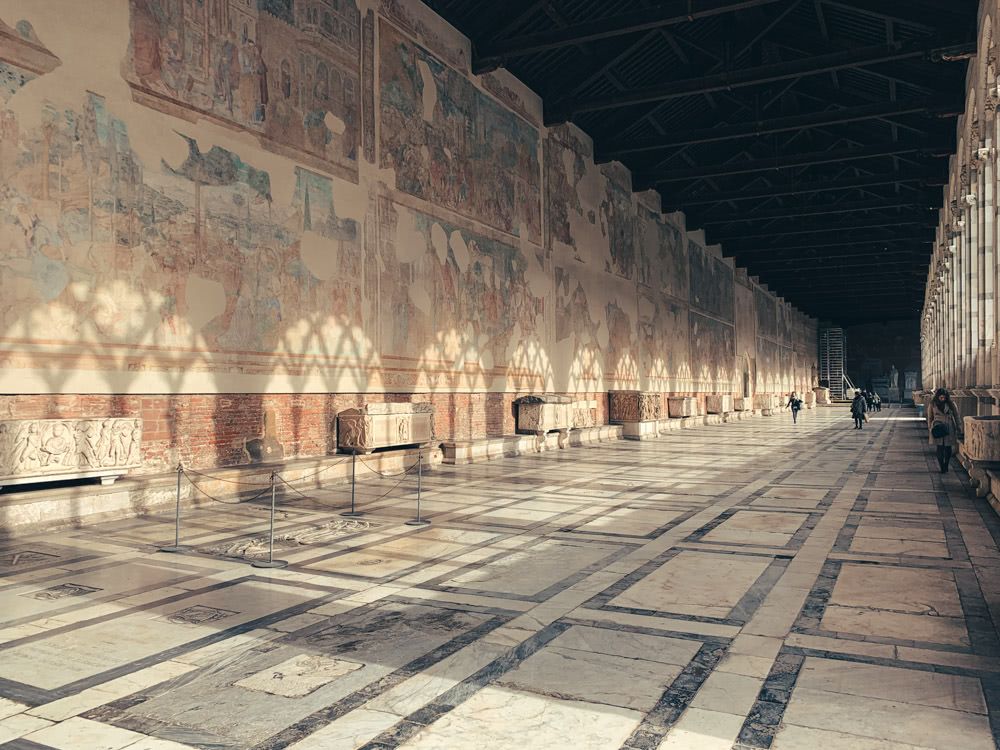 Campo Santo - Murals and Shadows
Campo Santo - Murals and Shadows
The wall was covered in frescos that were faded or erased in parts. One hopes they’ll be restored one day4. The ones you could make out, depicted familiar Biblical themes of saints, Judgement Day, and diabolical visions of hell.
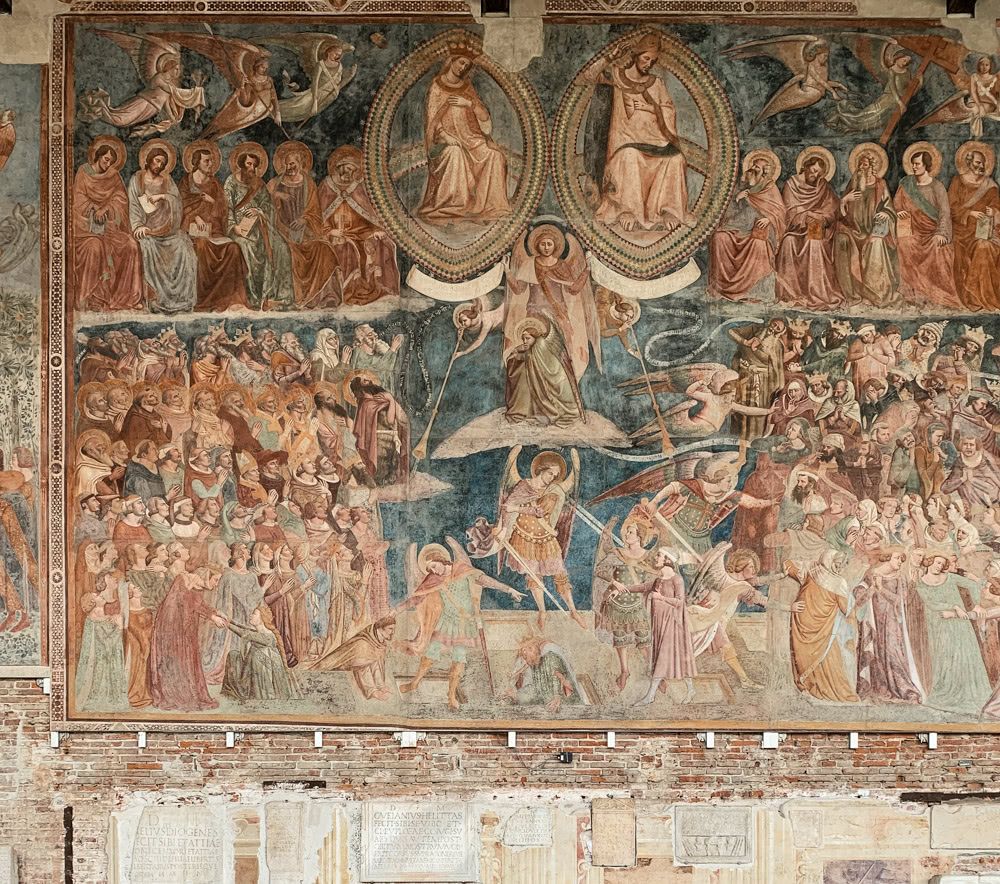 A Mural depicting Judgment Day
A Mural depicting Judgment Day
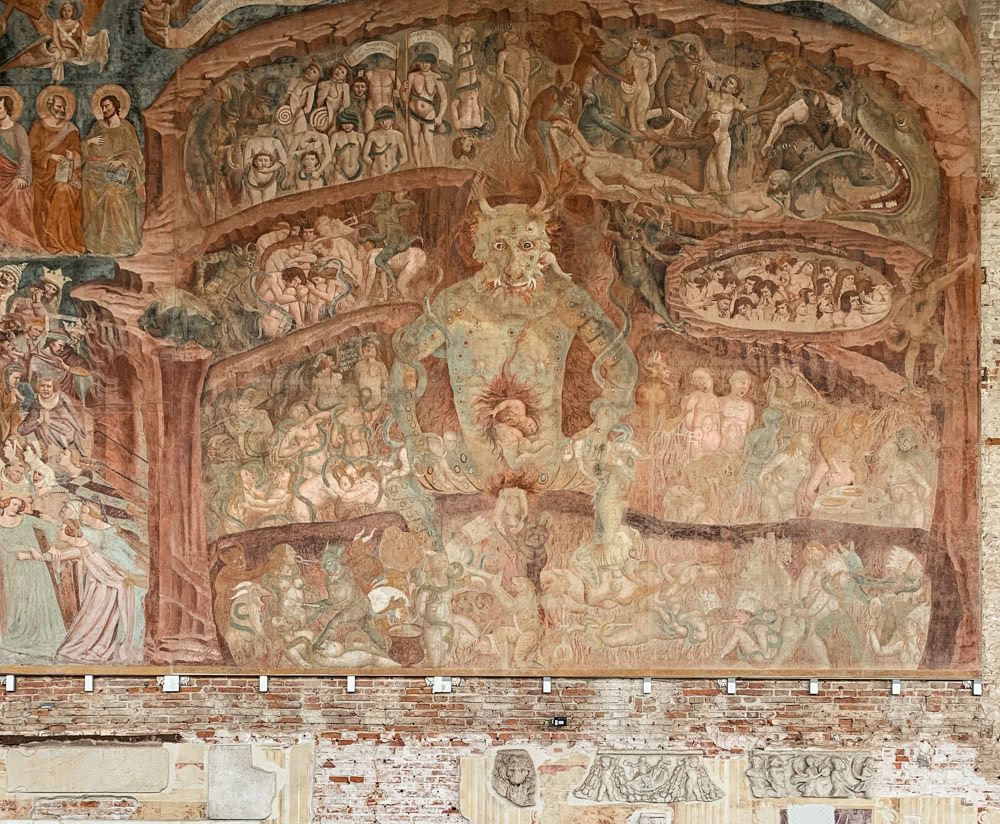 A Mural depicting hell
A Mural depicting hell
The room was lined with sarcophagi and bits of ancient masonry. The walls, just like the frescos above them, looked in dire need of a fresh coat of paint.
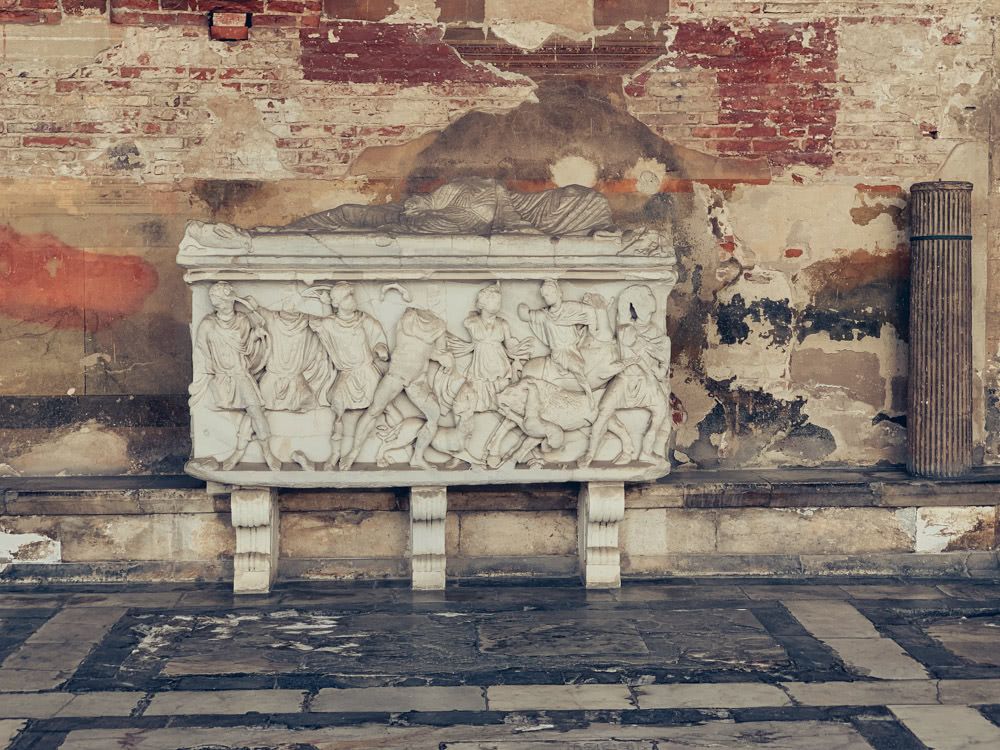 A Sarcophagus
A Sarcophagus
The Baptistry of St. John is an impressive cylindrical, domed structure with a marble facade and a delicately adorned entrance. Save for the bright stained glass windows, its interiors are relatively austere5.
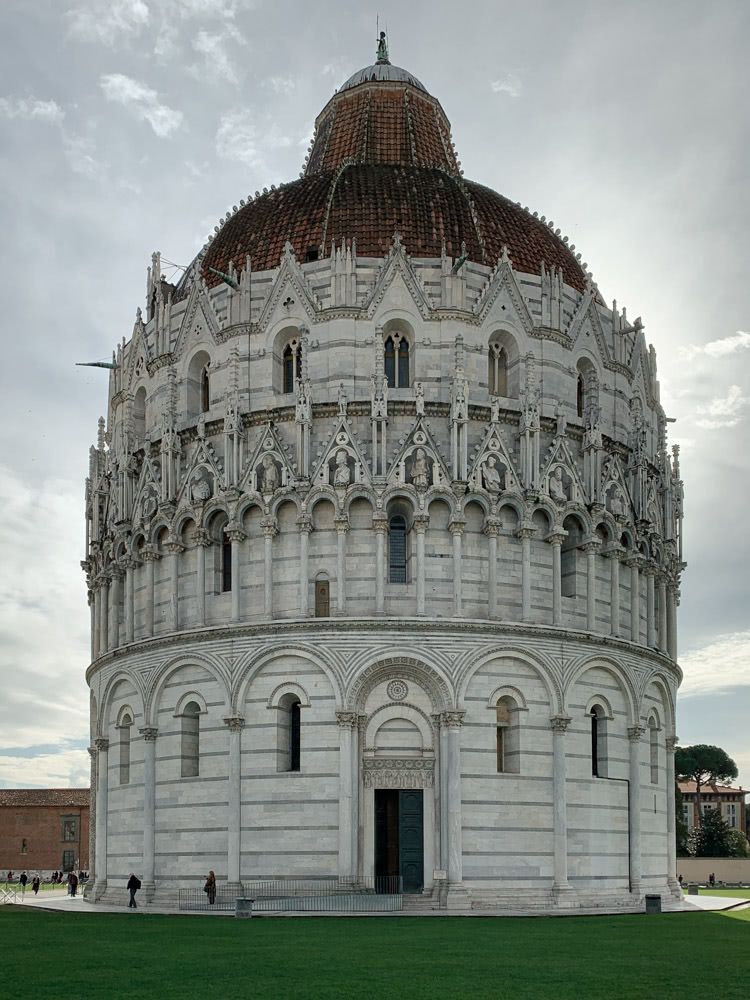 The Baptistry of St. John
The Baptistry of St. John
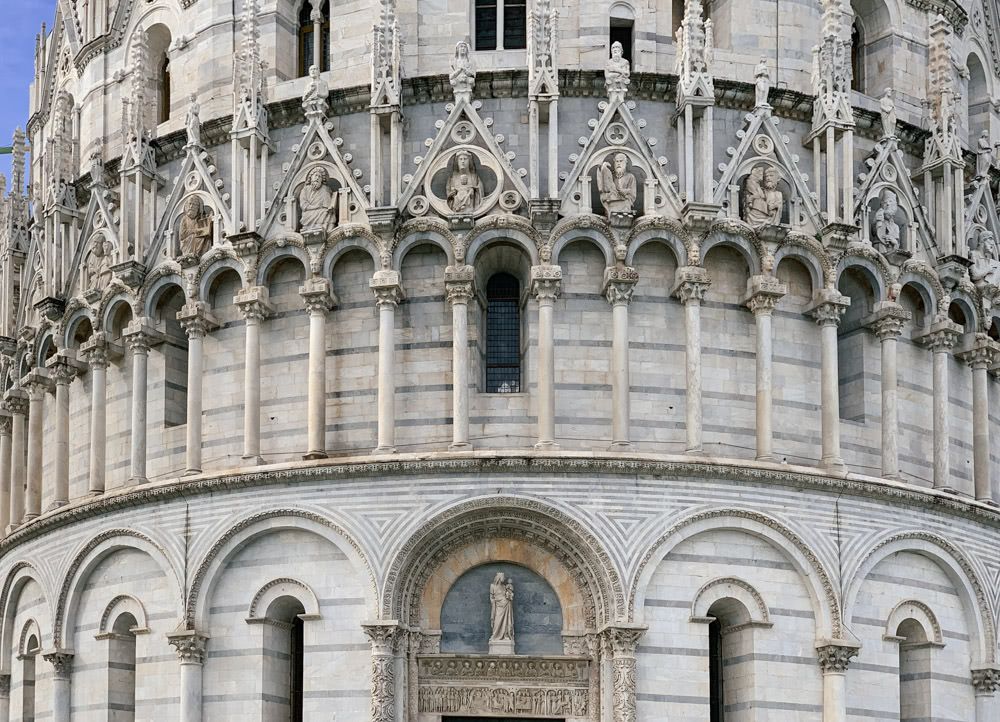 The Baptistry of St. John
The Baptistry of St. John
The cathedral, like many hundreds of years old churches in Europe, is still in active service. The intricate, golden ceiling above the entrance glowed in the sunlight streaming in from windows carved into the upper levels of the cathedral.
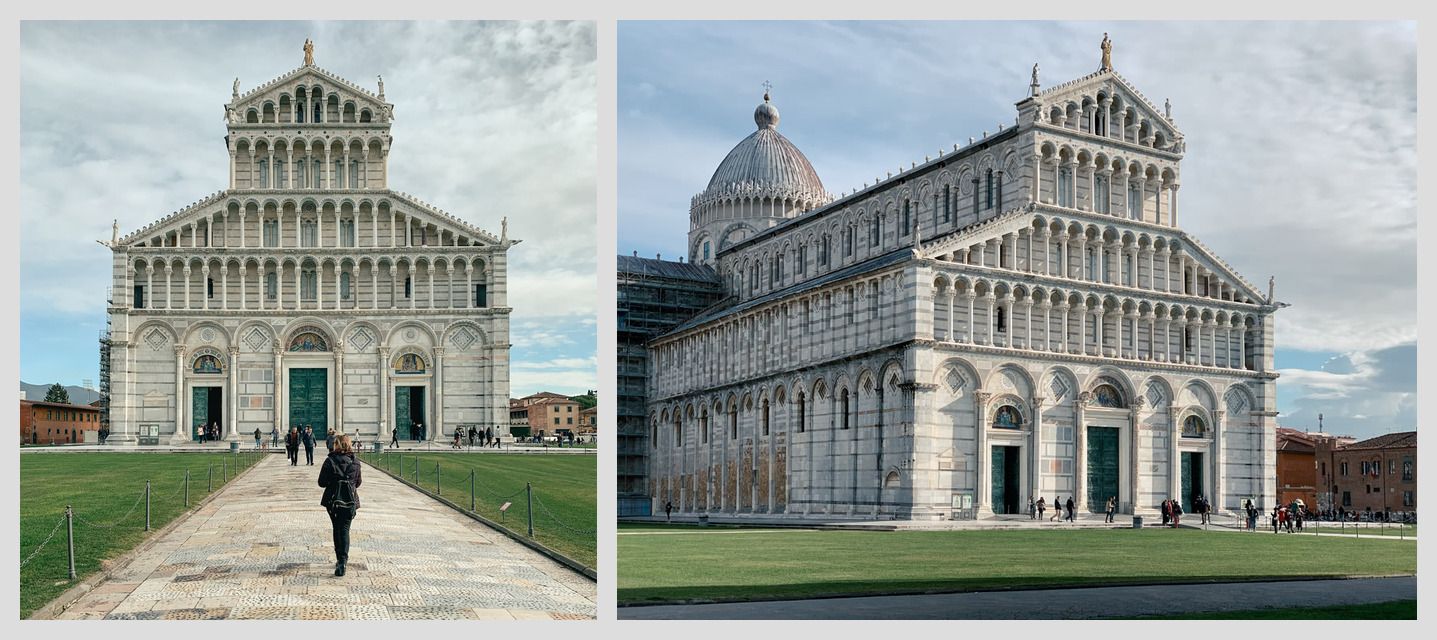 Cathedral exterior
Cathedral exterior
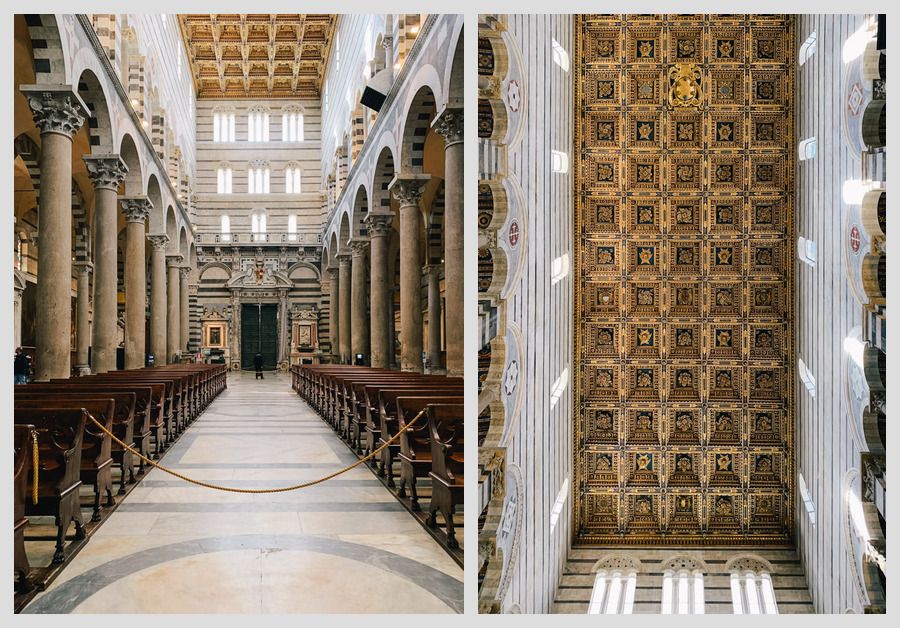 Cathedral interior and roof detail
Cathedral interior and roof detail
The wife drew my attention to the fact that the traditional tallow votive candles inside this church had been replaced with electric ones6. You’d put a coin into a slot, and a random candle (basically, a light bulb mounted on candle-length white rod) would come on. I failed to check the minimum denomination of the coin the slot would take.
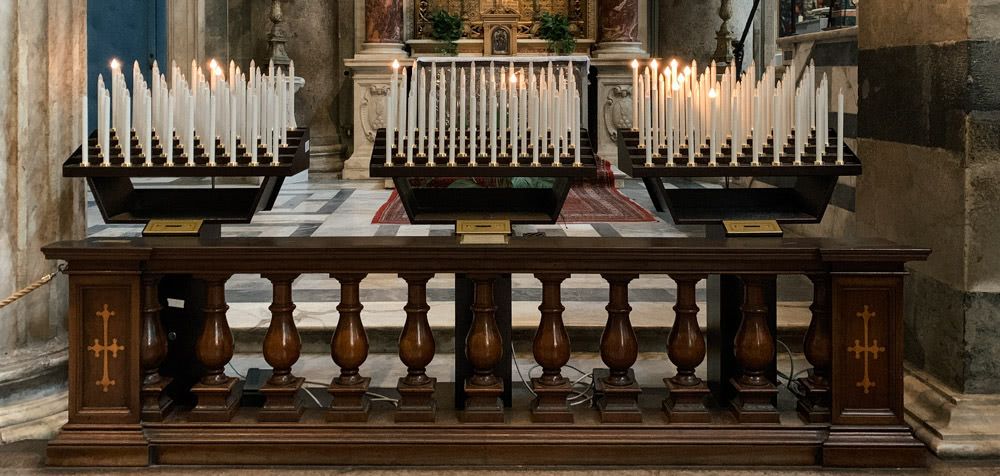 Electronic votive candles
Electronic votive candles
We lunched at a small local pizzeria we had bookmarked on our way to the Leaning Tower of Pisa. They were also selling a crisp, savoury pancake of chickpea flour7, sandwiched between two slices of focaccia. We ordered a portion minus the focaccia. It was delicious.
We took another meandering route to the station. We came across a local cathedral,
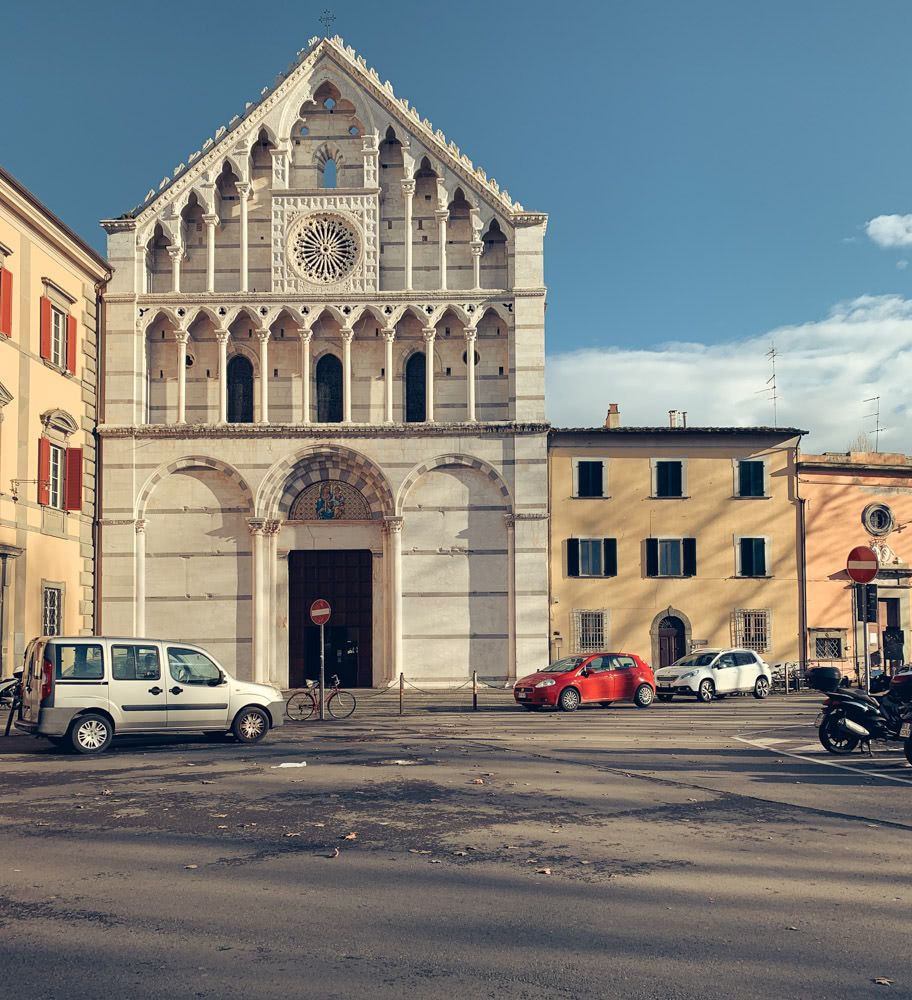 A small local church
A small local church
a park with a statue of Pietro Leopoldo I
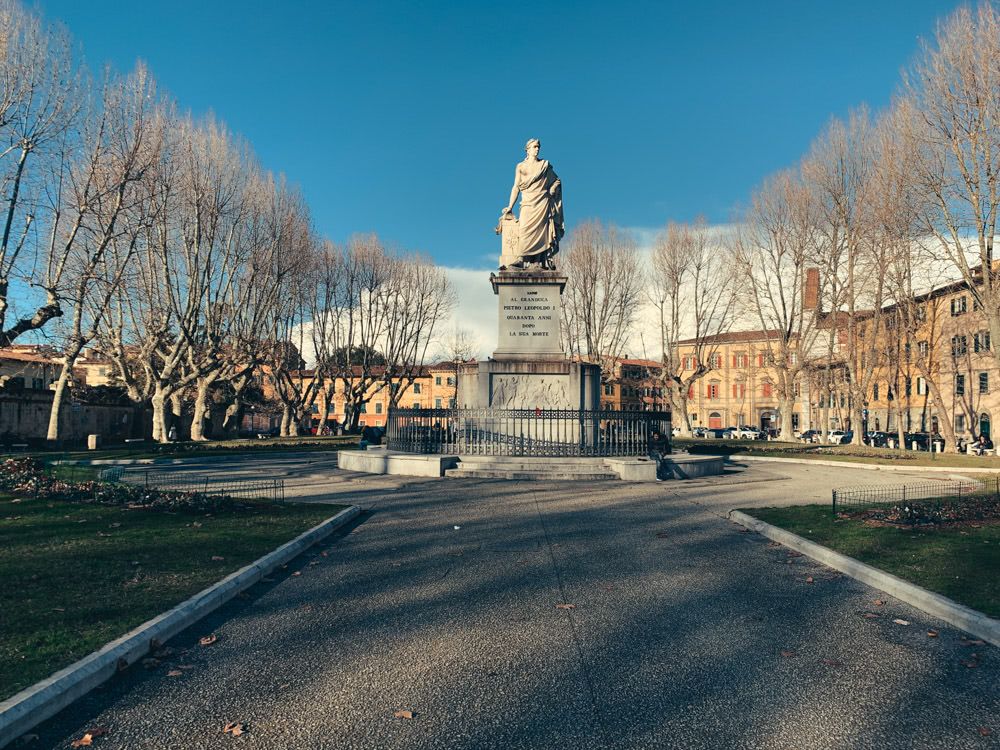 A park with a statue of Pietro Leopoldo I
A park with a statue of Pietro Leopoldo I
and these gorgeous buildings at the campus of University of Pisa that looked surreal in the evening light.
 University of Pisa campus buildings
University of Pisa campus buildings
We approached river Arno slightly west of where we were in the morning. This was fortuitous because we were able to visit the Santa Maria della Spina - a tiny gothic church with a beautiful marble facade8.
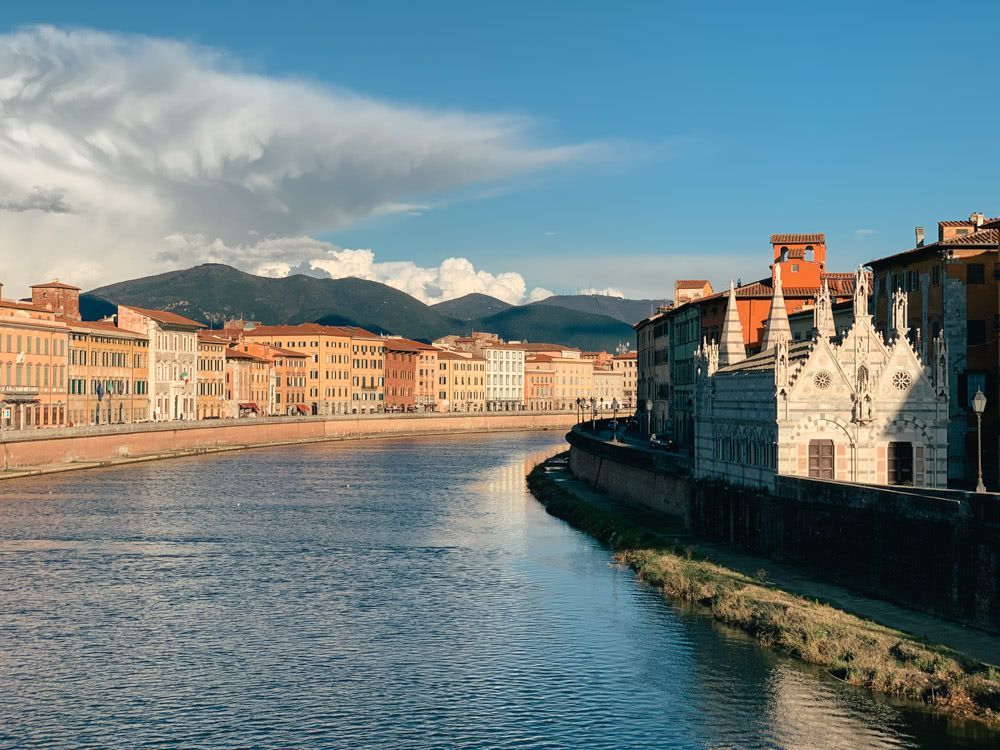 Santa Maria della Spina
Santa Maria della Spina
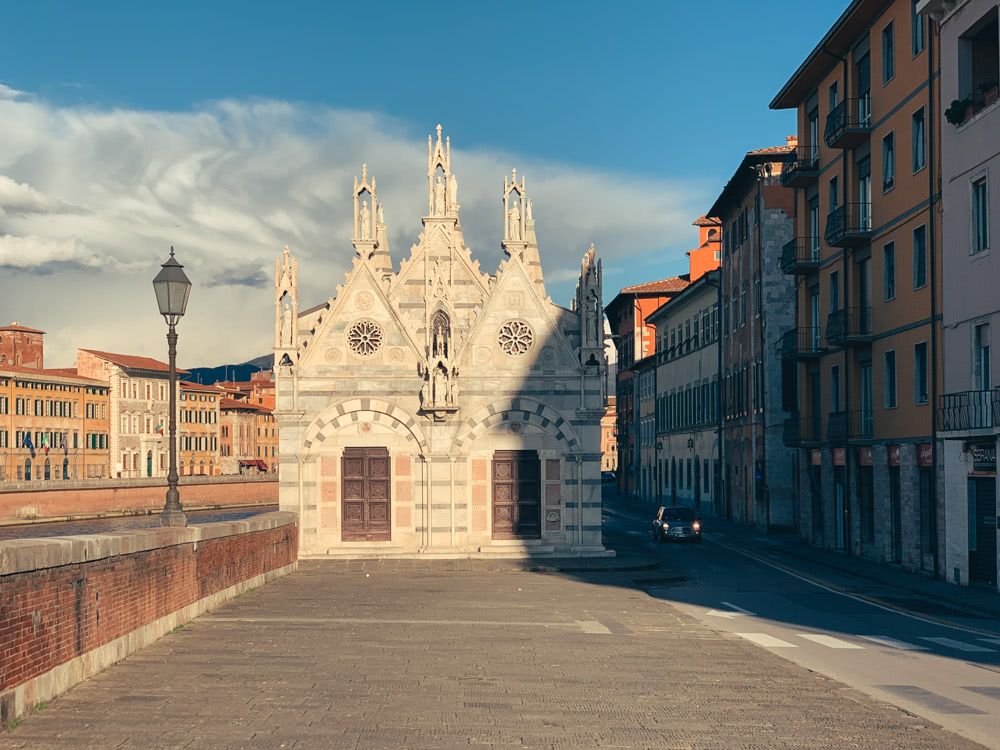 Santa Maria della Spina
Santa Maria della Spina
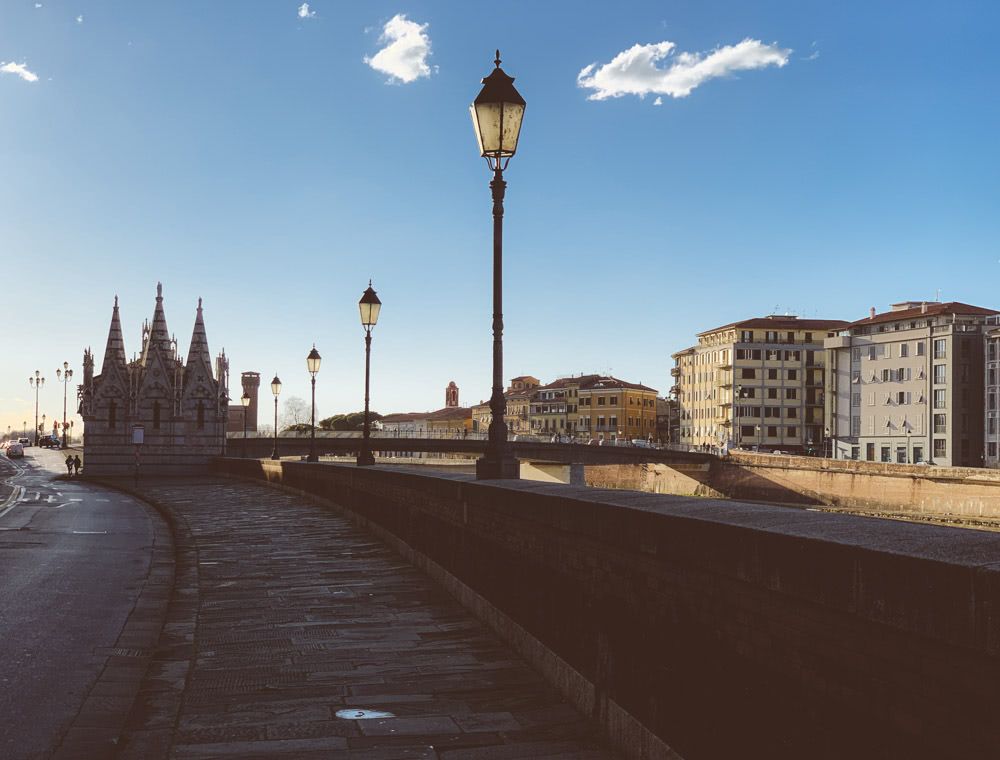 Santa Maria della Spina
Santa Maria della Spina
It was a lot windier now than in the morning, the river no longer a placid mirror. Sun was illuminating the buildings on the northern side and creating a breathtaking interplay between light, colours, shadow and contrast.
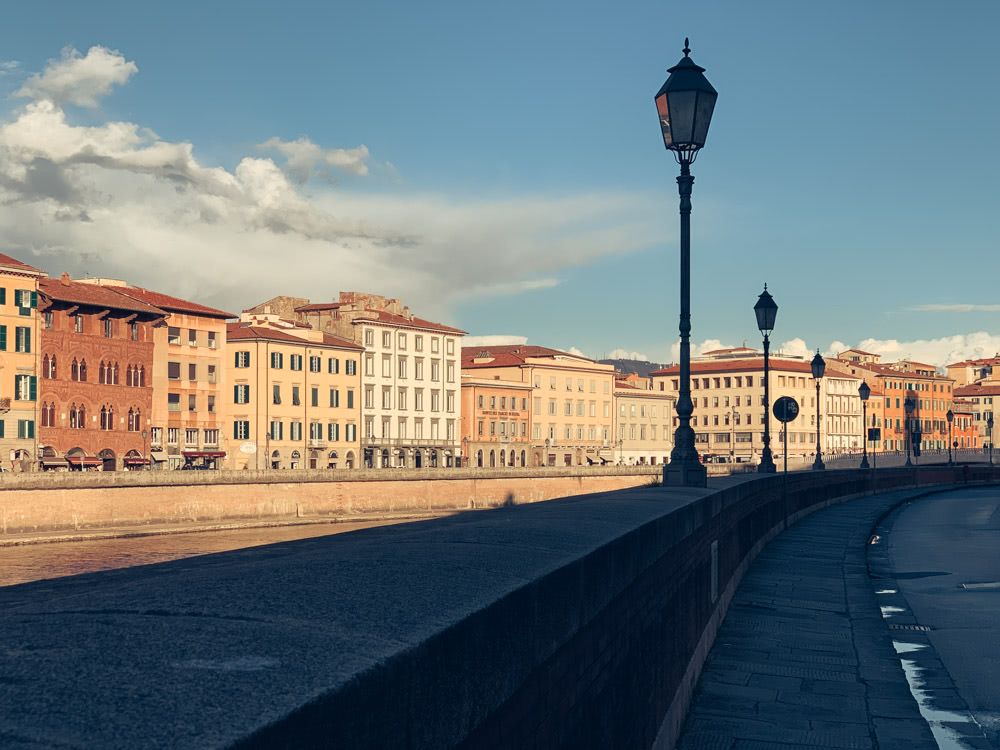 Light and contrast
Light and contrast
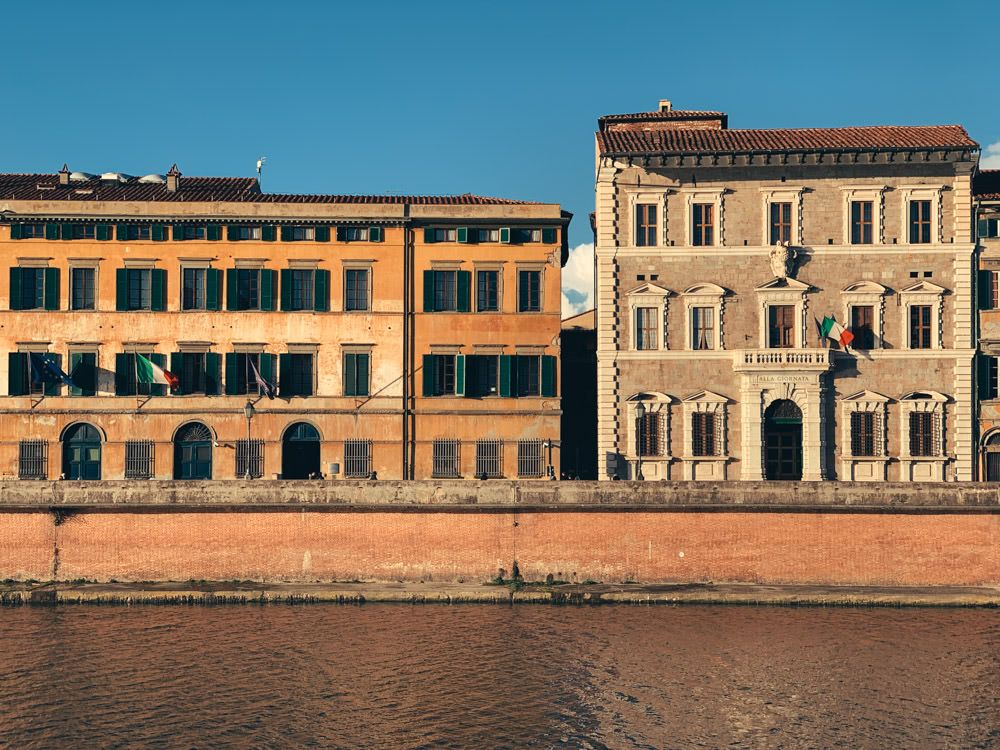 Sunlit Facades
Sunlit Facades
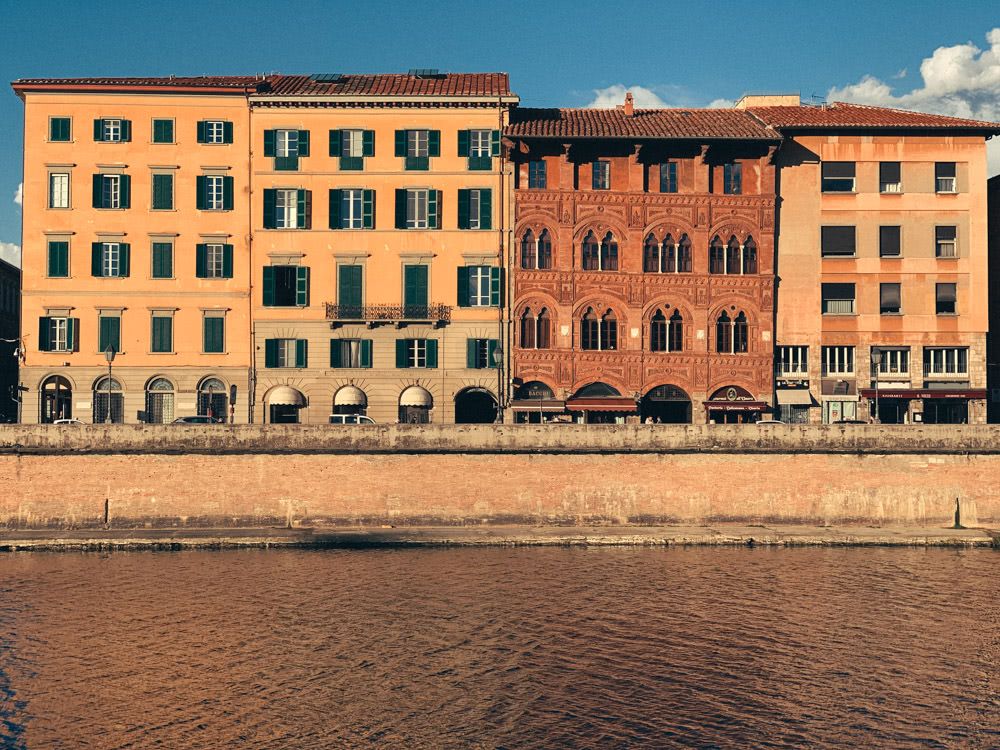 Sunlit Facades
Sunlit Facades
Another short walk through a quaint residential neighbourhood (complete with a merry-go-round) got us back to the Pisa station.
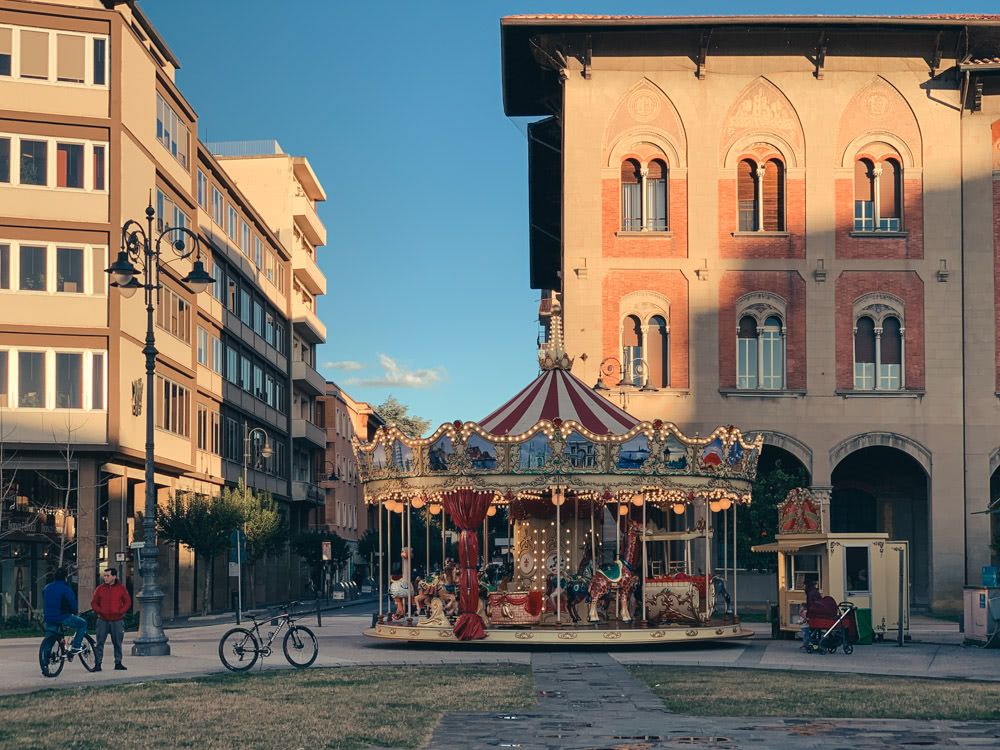 Merry go round
Merry go round
We almost got into the wrong train that would’ve taken over two hours to get us back to Florence. The right one was a few minutes later and, as it turned out, a few minutes late. After the kind of day we had had, we didn’t mind.
Or rather the master of itineraries, the wife.↩︎
One does this by walking in the general direction of the destination but not hesitating to take a detour if a street or building seems inviting.↩︎
For example, its height comes in some 30m short of the campanile next to the cathedral in Florence↩︎
Given the amount of sun they must get in summer, that might be a Sisyphean endeavour.↩︎
While researching for this blog post, I came across this article in the Guardian about the baptistry’s unusual acoustic properties. It was quiet inside during our visit. If the claims in the article are true, they definitely weren’t making a show of it.↩︎
Colour me surprised. Italy has one of the lowest adoption of electric cars in Europe while the church is switching to electric candles. Snark aside, while the switch might have been motivated by a sliver of environmental mindedness, I suspect more practical considerations were the real reason. These ‘electric candles’ don’t leave messy wax to be cleaned by someone, don’t have to be restocked and are a lower fire hazard all around. Win win.↩︎
Known as Cecina↩︎
I am not automobile minded, but given this cathedral’s diminutive proportions, I couldn’t help but think of Fiat’s iconic tiny car from the 50s.↩︎
The bathroom drain
The tiles around our bathroom drain are asymmetric:
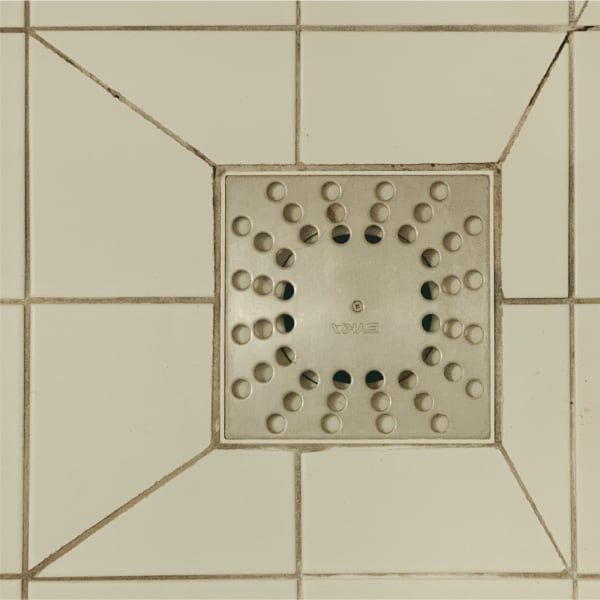 The misaligned bathroom drain
The misaligned bathroom drain
I am severely myopic but I don’t bathe with my glasses on. So even though the edges are considerably smoothened out…
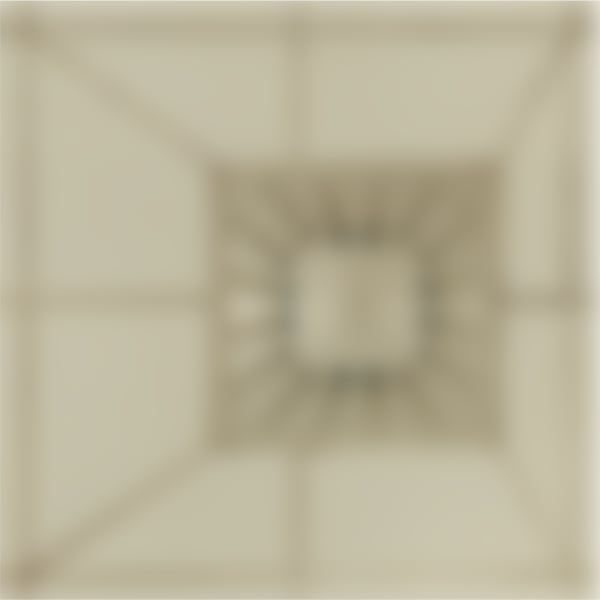 The misaligned bathroom drain to my eyes
The misaligned bathroom drain to my eyes
…I see enough to annoy me every day.
These days I mentally rotate this patch of drain cover and the tiles 90º counter clockwise, and imagine Base II from Contra overlaid1.
 The misaligned bathroom drain to my eyes
The misaligned bathroom drain to my eyes
